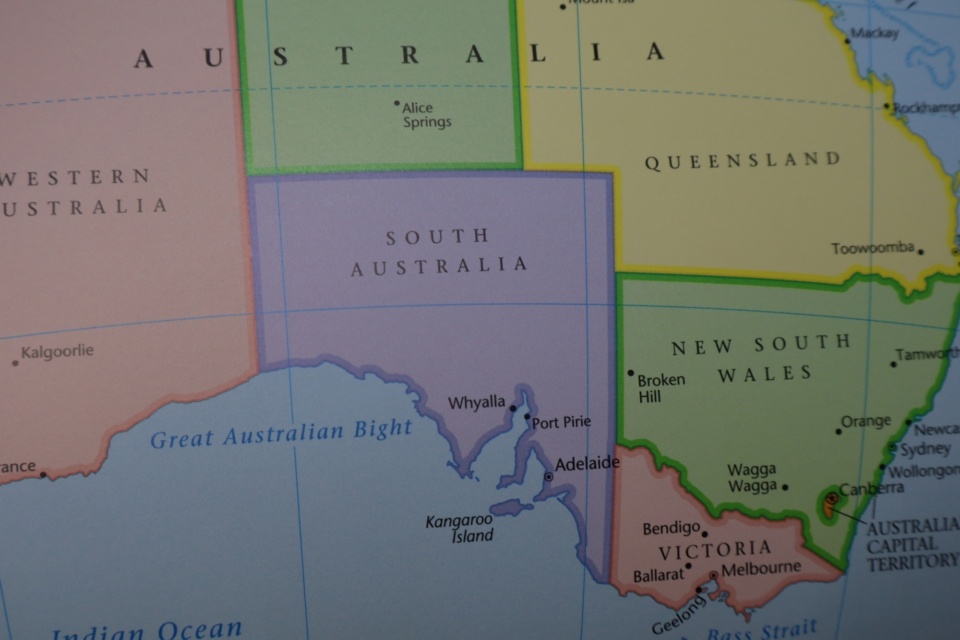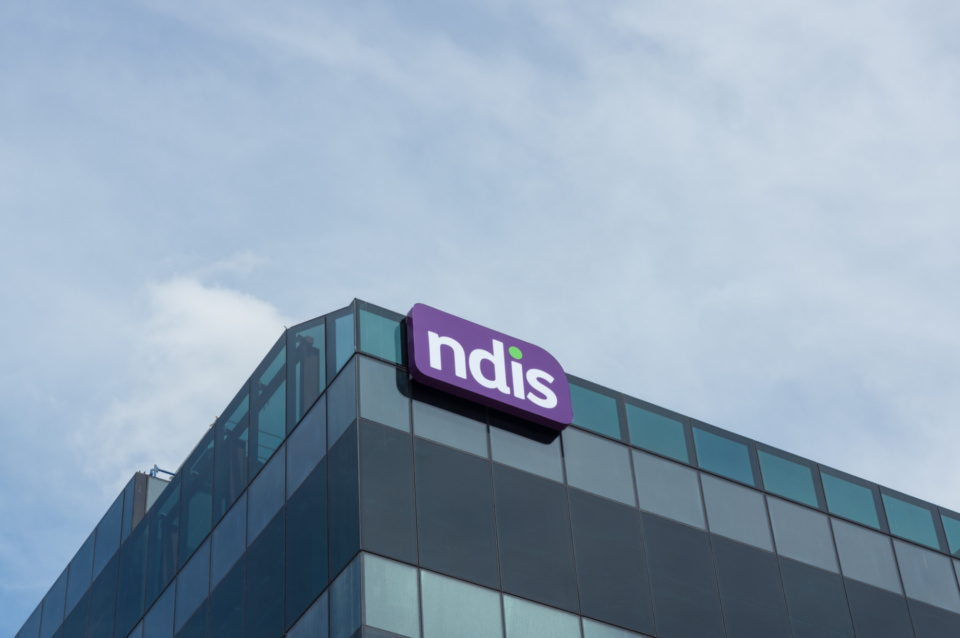
For community groups, federation is an eight-part headache
Posted on 03 Dec 2025
If you wanted an example of the problems inherent in federal systems, you couldn’t do better than…
Posted on 12 Mar 2024
By Hang Vo

In a recent wide-ranging oration delivered at the launch of the RMIT Social Equity Research Centre in Melbourne, Sacred Heart Mission CEO Hang Vo reflected on her pathway to Australia as a Vietnamese refugee, shared insights as a social sector leader and practitioner and outlined how we can build a more equitable society.
One of the privileges of being a leader is that we are given a platform where we can be heard.
With this privilege comes a deep responsibility to use that platform for good. While there is always a rawness in telling my story so publicly, I share my story as it will help you understand why I work in this field and my deep belief that social and structural systems influence a person’s life outcomes.
Social inequities can and must be addressed through better policy, practice and systems reform. Such reform also includes influencing community attitude towards a more equitable society. I will share three stories that have shaped who I am and led me to stand up here today.
The first story dates to 1978. I was seven years old when I came to Australia with my family as part of the first wave of Vietnamese boat people seeking asylum.
Like thousands of other Vietnamese, we set off on a fishing boat from the Mekong Delta with three possibilities: hope for a new life; death at sea; or be captured and sent to re-education camps.
We were luckier than many. My uncles were fishermen and had meticulously planned the escape in two fishing boats carrying 163 people. After four days at sea, we arrived at the shores of Malaysia where we spent three months waiting for help.
These memories will be etched into my mind forever. From the idyllic island life of swimming in the beautiful beach and watching the sunset, to the vision of a young man who hung himself on a palm tree; to the stress and tension that overburdened mum and dad’s every waking moment.
While I was only seven at the time, I knew that life had changed forever.
There was no UNHCR or Australian embassy to process our refugee claim on the island, so we went back on the boat to make our way to Darwin – as originally planned. When we got to Jakarta, Indonesia, to refuel, we were warned by local fishermen that the journey to Darwin was treacherous and boats before us never made it.
Somehow, with little ability to communicate, the men at the port managed to get help from the Australian Embassy. We stayed on the boat for 10 days with fresh water, food and clothing provided by embassy staff until temporary accommodation was found.
Within 28 days, we were found to be genuine refugees and flown to Australia. Can you imagine? Bipartisan support from the major parties led to the intake of thousands of refugees from Vietnam, Cambodian and Lao during the late ’70s and ’80s.
Not only was there bipartisan support, but resources were also poured into “feeder” countries like Indonesia to stop the boats by bringing us to safety, not languishing in offshore detention.
Our experience is a stark contrast to the early 1990s when detention of boat arrivals became routine. Offshore processing and temporary protection visas were first introduced in 1999. Successive governments have continued to legislate these policies.
When I was old enough to vote, I began to understand the significance of public policy. My experience led me to work in the refugee sector for many years including frontline work visiting detention centres across Australia and the Pacific.
The injustice and inhumanity of indefinite detention fuelled something deep in me as a young social worker who wanted to change the world. But frontline work was not enough. I had to find ways to advocate for structural and systemic change.
"Social inequities can and must be addressed through better policy, practice and systems reform."
The second story is about my educational pathway.
While there was no defining year, it’s been a consistent theme in my life. Education is a significant social determinant of health – it influences health outcomes over the course of a person’s life.
I am an example of that. Our parents made the treacherous boat trip to find a safe home and better life for their children. While they were barely literate in their own language, they understood the power of education.
Having lived through many civil wars and abject poverty, they believed that education would be our pathway out of poverty.
Mum stopped school at age 11 to work and make enough money so that her single mum had one less mouth to feed. She only learned to read and write when she met dad as an adult. She observed that with each civil war and rebuild, the people around her who were able to read and write, those who had skilled jobs, were able to get back on their feet more quickly.
This was further accentuated when we arrived in Australia.
It was true. People who had secondary or tertiary education had strong foundations and were able to retrain and learn English quickly. They got clerical work at the post office, became teacher’s aides, and some even retrained in their profession as doctors and teachers.
What I didn’t know then that I know today is that universal access to education is not enough to break the cycle of poverty as my parents dreamt it would. That cycle is made harder by several factors including your parents’ level of education and the location of your school.
Whatever our aspiration may be for an equal and fair Australia, it simply is not the case today. We have a two-tiered education system. I’m not here to debate the pros and cons of private and public systems. However, I know that if it weren’t for the disadvantaged schools funding in the ’80s and ’90s, I would not have had the necessary supports to propel me into tertiary education.
These included welfare co-ordinators, bilingual staff, supplementary funding for parental support, excursions and camps.
Westall Secondary College was, and remains today, at the bottom quarter of the Index of Community Socio-Educational Advantage. The index is measured on parents’ education, parents’ occupation, geographical location, and proportion of Indigenous students.
I share this story because it is a simple way to understand how education as a significant social determinant of health impacts a person’s life outcomes. Of course, positive family and community experience have also been significant determinants in my life outcomes.
I remain grateful for policies that sought to address structural and systemic inequities which allowed me to continue my path to tertiary education, and later in my career the role that quotas have played in creating opportunities for women of colour that I ordinarily would not have had access to simply for the fact of my parents’ socioeconomic background.
The third story comes from 2016 – a conversation I had with Aunty Irene, an Indigenous Elder.
As an adult, I have always felt this deep connection to First Nations peoples and their culture but never really understood why. Perhaps it was because I was 20 years old when I read John Pilger’s A Secret Country. Outraged that I was never taught at school about the Stolen Generation, dispossession, and genocide of Aboriginal and Torres Strait Islander peoples.
In 2016 I was working at EACH Social and Community Health, a large not-for-profit organisation in the outer east [of Melbourne] providing diverse services for people from 0 to 100.
Each year, the organisation hosted a Mental Health and Wellbeing Retreat for First Nations families. I volunteered to be a member of the ‘crew’ whose job was pretty much anything and everything – from making cups of tea for Elders to babysitting the kids so mums could attend a craft session or healing workshop.
One evening, sitting by the fire, Aunty Irene said, “Come and sit with me Hang. You’ve been running around all day. You seem to know a lot about us but what about you? Tell me your story.”
So, I shared with Aunty Irene our family’s story. She gently took my hand and warmly looked me in the eyes, “We are the same Hang. That’s why we have a special connection. We are both outsiders in our own home. We never feel like we belong.”
In that moment, everything made sense. We are outsiders in our own home. Except for Aunty Irene, this is her home. That conversation made me understand that the experience of resettlement does not end for refugees, no matter how long we have been here. It’s helped me understand that as a member of the LGBTIQ+ community, our experience of equity and inclusion doesn’t happen just because we succeeded with marriage equality.
Aunty Irene helped me to understand that my life’s work is contributing in whatever way I can to ensure that we listen to the people whose lives we are trying to impact. We must be relentless in our pursuit of ensuring that people have a say in the issues that impact them.
This requires giving up power. We must address the underlying power imbalance that our policies and systems perpetuate. Until we do, we will continue to see the levels of social inequities for generations to come.
The power imbalance between social worker and client; researcher and participant; lecturer and student; CEO and staff. This requires intentional and sustained effort to address systemic inequities and social norms.
These issues are not unsurmountable. If we are courageous and build on the work of giants who came before us, we can achieve a society where there is social equity for all.
"When good policy and service systems are melded together with a person’s lived experience, positive change is possible. Lives are transformed. Our role is to keep transforming lives through challenging systemic inequities."
What have these three stories taught me? How are they relevant to our discussion on social equity?
Social equity can only be achieved through multi-faceted approaches. My life outcomes were defined by Australia’s refugee policy at the time – a policy of welcome and acceptance, of honouring our international obligation to asylum seekers.
In its backdrop was compassionate community sentiment. Despite growing up and attending school in a location of disadvantage, the right social policy and service system provided the scaffolding I needed to propel me towards tertiary education.
When good policy and service systems are melded together with a person’s lived experience, positive change is possible. Lives are transformed. Our role is to keep transforming lives through challenging systemic inequities.
When thinking about the role of the Social Equity Research Centre, it is important to consider what the community sector already does well
I now want to dive deep into Sacred Heart Mission’s innovative Journey to Social Inclusion program – a solution to ending chronic homelessness. I will track its 15-year history and highlight the role of research, evidence-informed practice and outcomes.
In my role at Sacred Heart Mission, I see the impacts of housing insecurity and homelessness on our community every day. I also see resilience, courage and strength in that community, and when given the right platform, our service users have the solutions that will improve outcomes for them and others.
Sacred Heart Mission provides tailored services to people experiencing deep and persistent disadvantage and social exclusion. This includes people experiencing homelessness, family violence, drug and alcohol addiction, mental health [problems], social exclusion and the elderly.
Ultimately, our programs are designed to build people’s strengths, capabilities, and confidence to participate fully in community life – from brief intervention to long term intensive support.
We focus on those who fall through the system and where mainstream services are simply not appropriate. Currently in Australia, we are seeing significant focus within the media on housing affordability and cost of living, particularly as our economy and society recovers from the pandemic.
We were pleased to see the Guardian Australia’s recent series of articles capturing the attention of politicians and the community. The Guardian Australia reports that nobody really knows how many rough sleepers are dying in Australia. It’s a hidden crisis – there is simply no national data.
The Guardian Australia has spent 12 months identifying and investigating 627 homelessness deaths using 10 years’ worth of non-public death reports to state coroners, an analysis of inquest findings since 2010 and interviews with dozens of homeless Australians, victims’ families, frontline support workers and researchers.
The findings are stark. They show Australians experiencing homelessness are dying prematurely by a margin of more than three decades. The average age of death is 44.
Unfortunately, this is not new to Sacred Heart Mission. For decades we have been supporting people who age prematurely due to the effects of chronic homelessness where prolonged complex health needs go untreated or mistreated.
We know that deep disadvantage is multi-faceted, and people’s experiences are intersectional. It often means a history of trauma, abuse, and isolation. For example, while the national population of First Nations peoples is three per cent, almost 10% of people accessing our services are from a First Nations background.

Sacred Heart Mission’s services are trauma informed. It means we welcome all without judgment. We provide culturally safe services. We ensure that people have a say in the issues that impact them. Agency and dignity are central to supporting people out of poverty and disadvantage.
The top five reasons people come to Sacred Heart Mission are:
In 2008, we could see that clients were cycling in and out of homelessness because 13 weeks of funded support by government was a completely inadequate timeframe.
The Journey to Social Inclusion program, or J2SI, is a three-year program aimed at ending chronic homelessness through rapid access to housing and intensive support over three years. J2SI was born as a pilot in 2009.
We did this through our own fundraising, and the Victorian government funded the evaluation. We wanted to stop the revolving door and we were fortunate to have incredible donors who backed us.
J2SI defines chronic homelessness as sleeping rough continuously for at least a year or having experienced three episodes of homelessness over the past three years. People experiencing chronic homelessness have complex needs. It is not possible to address these issues within 13 weeks and housing alone will not end chronic homelessness.
Looking at world best practice and adopting housing first principles, J2SI’s success is based on rigour of practice and an evidence-based service model that measure five outcomes:
1. housing
2. health and wellbeing
3. independence
4. social participation
5. economic participation.
These outcomes are intrinsically linked to the social determinants of health as indicators of health equity and life outcomes.
I was fortunate to meet one of the early participants of the J2SI program. I have changed the name for privacy.
Almost 12 months into my role, it was through meeting Terri that I truly understood the impact of the program.
Terri’s description of each year is exactly as the program was designed. In 2013, Terri first presented at Sacred Heart Mission through our women’s crisis housing service, Homefront.
• Terri was 28 years old at the time.
• She had experienced significant trauma in early childhood.
• Since the age of 15, Terri had experienced many years of homelessness.
• Throughout her youth she experienced family violence, and as an adult she experienced intimate partner violence.
• She had a history of ice addiction as well as misuse of prescription medication.
• She had been diagnosed with bipolar disorder, anxiety and depression.
• She had been diagnosed with a range of women’s chronic health issues which were debilitating.
• Terri was socially isolated due to estranged relationships with her family and friends.
In 2018, Terri was referred to J2SI as part of the first intake. When she entered the program, Terri thought three years was way too long, but she soon realised that it was a “game changer”, to use her words.
“For someone who lives in constant crisis – always in fight or flight mode – knowing I had three years’ support meant that I allowed myself time to be calm, to be still and to learn to trust. I started to believe I could get well and change my life. I didn’t have to keep thinking about surviving.
“My first year was just getting calm. Second year was the hardest and most intense work but by then I had a lot of trust with my case manager.
"I engaged with a trauma therapist and I was in and out of detox and rehab. The third year was reconnecting with my family and friends. Getting to know my local community. Removing myself from users and sellers”.
"If we are to achieve social equity for the future, we need courageous leadership today."
In listening to Terri’s story, I could see exactly how key features of J2SI work in practice.
Year one:
Year two:
Year three:
Unfortunately, there are too many stories like Terri's.
Right now, we are pitching to government to scale J2SI across Victoria together with four consortium partners, each bringing complementary expertise and reach – Uniting Vic/ TAS, St Vincent de Paul VincentCare, Salvation Army, and Aboriginal Housing Victoria.
In many ways, J2SI is a textbook example of piloting, testing, refining and scaling.
J2SI is a three-year program, but we are measured at years two, three and four, because it was very important for Treasury that some of the outcome payments relate to the clients’ achievements after support has ended and the changes in their lives are being sustained.
In 2009, Sacred Heart Mission funded the pilot through our own fundraising and the Victorian government funded the evaluation. RMIT played a critical role in conducting the evaluation in each year of the pilot.
We used a randomised controlled trial which was highly uncommon in social services. It was a bold step to recruit 100 people experiencing chronic homelessness and randomly assign half to the control group who did not receive the intervention, while the other half received the J2SI program.
The trial found that the program reduced [the number of times people accessed] health and justice service systems; however, it did not generate sufficient return on investment. In 2016 – four years after the pilot ended – phase two was implemented.
The social impact investment was a game changer as it enabled J2SI to be scaled.
With the support of Treasury, a lower cost form of social impact bond was designed for the J2SI social impact investment, significantly reducing the investment component of the costs to government.
J2SI was able to access low-cost debt through philanthropic support in providing guarantees. With the outcomes being achieved those guarantees have not been needed.
The J2SI has provided support to three intakes of 60 clients, with the first intake starting in 2018 and the third intake completing their support in the middle of last year.
The average outcomes across the three intakes were:
This figure is projected to be higher for the fourth intake:
In 2021, based on the results being achieved, J2SI was then funded for two further intakes of 60 clients in the first year of the early intervention investment framework.
The J2SI was the first “payment by results” contract for Department of Fairness, Families and Housing and it was designed so the structure could be used for future contracts across the department.
We are incredibly proud of the outcomes being achieved by clients. The recent funding collected [further] measurements, not just the two measures of sustained housing and hospital bed days for outcome payments.
We can now report that compared to the year before baseline:
The J2SI is an excellent case study of what is possible when the service sector, government and universities collaborate to achieve evidence-based interventions that lead to measurable outcomes that end chronic homelessness.
When I asked Terri to share any words of wisdom about the program, she replied:
“People like myself cost the government a lot of money. We are in and out of crisis services, needle exchange, jail. People living on the streets cause chaos. Youth refuges, rooming houses, psychiatric wards, I’ve done it all. We become really good at accessing services. Investing three years may seem like a lot but it’s nothing to turn around a life. It’s a great investment for me to return to the community, to reconnect with my family. It’s better for me, my family, and the community.”
We have a solution to end chronic homelessness now. We need political will of governments to partner with us. We need courage and long-term vision. J2SI is not an overnight success – it’s been a 15-year journey.
If we are to achieve social equity for the future, we need courageous leadership today.

Thinking about the future, let’s turn to climate change.
No other issue requires our attention more urgently right now than climate change. Specifically, we must address the disproportionate impact of climate change on those experiencing poverty and disadvantage.
Climate change is one of the most pressing challenges facing our planet. Terms like climate crisis and climate emergency seem to have lost their significance and sense of urgency.
I want to focus now on the disproportionate impact of climate change on those experiencing poverty and disadvantage. Australia faces major climate change risks unless we begin to change and transition to a low carbon economy.
This is certainly not a new phenomenon.
I remember in 2009 during my time at Australian Red Cross, we were supporting communities devastated by the Black Saturday Victorian bushfires and North Queensland floods concurrently. It was quite surreal – the images of flood and fires on our TV screens at once.
The Black Saturday fires started on 7 February 2009. Approximately 400 fires were recorded across Victoria, affecting 78 communities. A total of 173 people died in the fires, and 2029 houses were lost.
A week earlier, the monsoonal rain in North Queensland affected 62 per cent of the state. More than 3000 homes in Ingham were affected by the flooding. That pattern is continuing, and our climate is far more variable now than it was, primarily as a result of climate change.
We cannot achieve social equity unless we achieve climate equity.
Climate change disproportionately affects people on low incomes. People experiencing financial or social disadvantage are impacted by climate change first, worse and longest because they have access to fewer resources to cope, adapt and recover.
Recently released research by the Victorian Council of Social Services shows the link between Melbourne’s hottest and most disadvantaged suburbs.
According to VCOSS:
We see an increase in our drop-in services on really hot and cold days. Part of the solution is greening our suburbs, more trees, more parks and less concrete. But we also need to recognise that people on lower incomes, who live in cheaper housing in hotter areas, need extra support to deal with heat.
We need more investment to help low-income households keep cool, including free housing retrofits to enhance energy efficiency and comfort.
An example is housing. People on low incomes have little ability to change their housing situation, because the market is so competitive. Much of our public housing is old and of poor quality, meaning that heating and cooling these homes is extremely expensive and appliances are not very efficient.
Private renters are reliant on landlords to ensure their properties are robust and will withstand a range of weather conditions, as well as being efficient in a time of rising energy prices. They cannot control the energy efficiency of the appliances in their homes, or install blinds or double-glazed windows, solar panels, batteries or water tanks, whereas owners can.
If you are on a low income, this is even worse because there is little choice in the properties available and it is very difficult to move. People on low incomes are also most vulnerable to rising energy prices.
Though we have concessions and discounts for people on income support payments, it doesn’t fundamentally change the price of energy, or the difficulties in navigating the energy market. Every gas and electricity retailer makes its pricing difficult to understand, and interacting with providers largely occurs online – which is inaccessible for many people.
Research by the Consumer Policy Research Centre in Victoria shows that people who are eligible for concessions on their energy bills often don’t actually receive them.
The research found that people in public housing and who speak English as a second language were most at risk of missing out on concessions. I know my dad would never be able to access it without us kids helping.
There are similar themes for the Victorian Government’s Power Saving Bonus in 2022 and 2023. Many people in regional areas did not access the scheme, and people in higher socio-economic areas were more likely to apply.
The reason for this is also economic and educational – you needed to apply online, requiring access to the internet, and have digital literacy. It was a poorly targeted scheme that did not help the most vulnerable. It was one-off support rather than sustainable change.
Instead, we should focus our energy on helping lower income households to be prepared for the future – transitioning away from gas and towards renewables, and more efficient electrical appliances, heating and cooling.
"We cannot achieve social equity unless we achieve climate equity."
The Australian Government has a responsibility to ensure Australia meets its obligations under the Paris Agreement, limiting global temperature increase to well below two degrees Celsius and pursue limiting it to a rise of 1.5 degrees. We need to support people living on low incomes to transition to renewable energy.
If we do not act now, poverty and inequality will continue to escalate.
We also have a duty to the next generation to ensure that they have a world to inherit. The Australian Council of Social Service (ACOSS) is calling for the establishment of a national fund to slash energy bills and make low-income homes resilient to climate change.
A new report finds bolstering energy efficiency, electrifying and installing solar to low-income housing is a low-cost way to tackle the cost-of-living crisis and end energy poverty.
There are about 1.8 million low-income households in Australia who cannot afford to escape extreme temperatures because they’re stuck in inefficient homes that are expensive to warm or cool. They’re either skipping food and medicine or falling further into debt to make it through the summer.
Others have no way to cool their homes, leading to illness and even hospitalisation. ACOSS is calling on the federal government to establish a special purpose funding vehicle to provide rolling funds for the upgrading of low-income social and private dwellings.
Funding upgrades to make homes electric, solar and climate-resilient will reduce poverty, protect against heat-related illness, bring down the cost of power and create local jobs while turbo-charging Australia’s emissions reduction targets. There are about 400,000 public and community dwellings and at least 270,000 private rental households on the lowest incomes.
Direct government funding for low-income housing would build economies of scale and market capacity to slash housing retrofit costs across the board. The federal government should prioritise investment now to cut household energy bills and ensure disadvantaged people and communities are not left behind in the energy transition.
Our sector is seeing an increase in the impacts of climate change on vulnerable communities every day. We need to ensure that service policy, design and delivery takes account of this.
This crisis extends beyond the areas of science and economics. It is a humanitarian crisis which disproportionately affects those on low incomes or living in poverty. We need to amplify our advocacy on this issue urgently.

I want to close by coming back to the title of my oration: “Social equity for the future starts with courageous leadership today”.
If social change takes a generation, which is 20–30 years, then we must start now. Poverty and inequality are complex. They’re pervasive. It’s hard to know where to start.
I remember the wise words of Michael Kirby, a former Justice of the High Court of Australia. He was known for his dissenting views, which earned him the nickname the Great Dissenter. I have been fortunate to have met Michael through my role at the Victorian Pride Centre, where he is the organisation’s patron.
His fierce intellect is matched by his compassion and humour. He speaks publicly about his regret in not fighting for LGBTIQ+ rights earlier in his career when he had a platform. He says that real advocacy takes courage. Courage to turn up when no one else does. Courage to keep lobbying when politicians look away. Courage to care when the issue is no longer popular.
Courage to speak up when there is deathly silence.
Today, I want to leave you with a call to action on two issues that I think require courageous leadership today to achieve social equity for future generations: the social class divide and First Nations self-determination.
If change takes a generation, we need to start now to ensure that Generation Z and Generation Alpha – those born since the mid-1990s and those not even born yet – live in a world that is more socially equitable than the current one.
For many people, sustained economic growth and reliable access to employment offers those opportunities and the ability to embrace them. But for those experiencing entrenched poverty, disadvantage and material deprivation, this is not enough.
We have unfair and avoidable differences in health status within our own country. The fact is health and illness follow a social gradient on levels of income. The lower the socioeconomic position, the worse the health.
We will need to develop specific policy responses in order to reduce social inequality. Broadly speaking, a person’s social class is determined by their social and economic status. Many Australians experience economic disadvantage at some stage in their lives, but for most, it is temporary.
About 2.2 million Australians experience relative income poverty. That means their income is below 50% of the median. Children and older people have the highest rates of relative income poverty. The figure has fluctuated since the late 1980s, but even though Australia has had 30 years of uninterrupted growth, income poverty has not declined.
Ken Henry, former treasury secretary, said in a recent ABC interview that policymakers have allowed intergenerational unfairness to become embedded in the system, with housing, the state of climate policy and the Commonwealth's overreliance on taxing workers' incomes as three areas of major policy failure.
There are structural inequities that will make economic and social mobility harder and harder. A tax system favouring rich over poor. The changing nature of work favouring those with formal education over those without. The exponential pace of technological change further dividing those with high digital literacy and those with low or no digital literacy.
My challenge to us today: how can we ensure Australia becomes a society where social class is no longer a determinant of life outcomes in 20–30 years’ time? What research questions must we be asking today?
Australia will not achieve social equity unless we achieve equity for First Nations peoples. I remain deeply saddened by last year’s devastating Voice to Parliament referendum results.
Unlike the media and politicians, where there is deathly silence, many of us here today continue to stand with First Nations peoples and strengthen our resolve to do what we can to progress self-determination and reconciliation.
For the social services sector, self-determination of First Nations is more a priority now than ever before. Every day, we see the over-representation of First Nations people in our justice system, out of home care, suicide, homelessness. This must end.
We must build mechanisms for truth telling. We must celebrate the richness of the oldest surviving culture in the world. We must listen deeply to First Nations Elders, Aboriginal community-controlled organisations and peoples.
The Productivity Commission released its findings of its review into Closing the Gap only two weeks ago. The key message of this report is that fundamental changes are required to deliver on the agreement.
There are four priority reforms in the agreement:
1. Formal partnerships and shared decision making
2. Building the community-controlled sector
3. Transforming government organisations
4. Shared access to data and information at a regional level.
The review focused on assessing progress against the priority reforms and identifying ways to accelerate progress to improve socio-economic outcomes. The findings are damning:
• Governments retain power over decision making in partnerships.
• Governments limit the extent of Aboriginal and Torres Strait Islander people’s control of the speed and direction of reform.
• Governments still require Aboriginal and Torres Strait Islander people to fit into mainstream approaches to design and implementation of programs and services.
• Governments have failed to reform mainstream systems and institutions to ensure they are accountable for closing the gap
• There is a need to progress data development and data sharing in order to implement the reforms.
My challenge to us all today: how can we show courage as allies of First Nations peoples at a time when no one is listening? What can we do to ensure that people like Aunty Irene do not feel like outsiders in their own country?
While these issues may feel intractable at times, they are not. We know that when governments, the social service sector, universities and the community collaborate, social change can happen.
Let’s find the courage to review, repair and rebuild our policies and systems to ensure that regardless of our parents’ level of education, the location of the school we attended and the colour of our skin, our systems and structures will enable and support everyone to live a fulfilling life.
Hang Vo is CEO of Sacred Heart Mission.
We're proud to take a stand on progressive issues. Here's a taste of our commentary.

Posted on 03 Dec 2025
If you wanted an example of the problems inherent in federal systems, you couldn’t do better than…

Posted on 19 Nov 2025
When it comes to loyalty to car brands, it can be confusing who we should support, and, even more…

Posted on 05 Nov 2025
Before the Prime Minister gets too excited about his recent meeting with the American President, he…

Posted on 14 Oct 2025
The idea of "long term" is not something that sits well in the social media era, yet governments…

Posted on 30 Sep 2025
I am proud of what Our Community, and its exceptional team, have achieved in the past 25 years. As…

Posted on 16 Sep 2025
Happy Australian Citizenship Day! To mark the occasion, Our Community leader Denis Moriarty takes…

Posted on 02 Sep 2025
Words live, evolve, and sometimes die. Some words are invented from scratch, some are old words…

Posted on 26 Aug 2025
The cost of the National Disability Insurance Scheme (NDIS) is climbing relentlessly – $44 billion…

Posted on 04 Aug 2025
The new leader of the Liberal Party, Sussan Ley, wants to increase the proportion of women…

Posted on 08 Jul 2025
The United States wants Australia to spend more on its armed forces. That’s the way nations talk…

Posted on 26 May 2025
When it comes to citizenship, Australians want to have their cake and eat it too, writes group…

Posted on 19 May 2025
The lack of judicial partisanship in Australia compared to the United States is something to be…